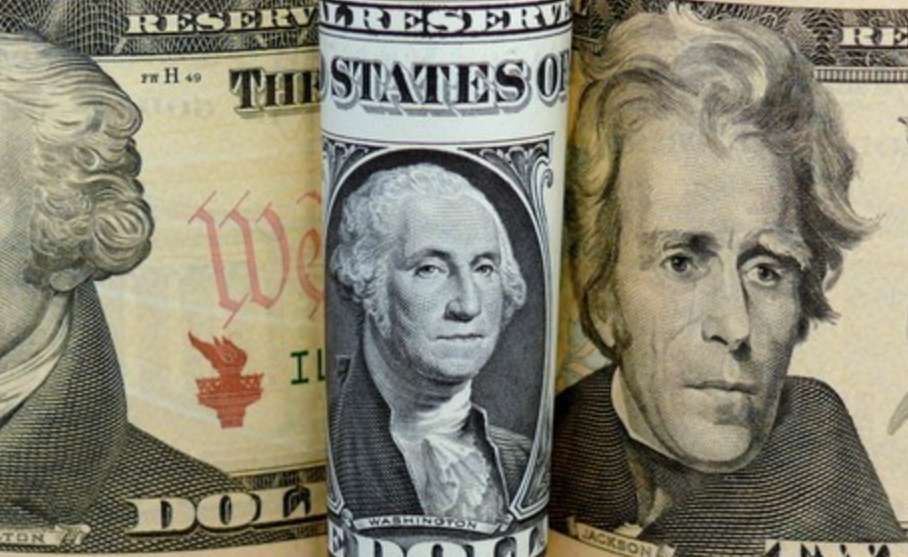US Bank Reserves Breach Key Level
Advertisements
In recent months, the stability of the U.Sdollar and its prominence on the global stage have come under scrutiny like never beforeFollowing the decoupling of the dollar from oil prices earlier this year, an uncertainty that had been brewing over the durability of the dollar's dominance has erupted into full-blown doubtInvestors, particularly those operating on Wall Street, have begun to shy away from U.Streasury bonds, likening them to hazardous assets rather than the safe haven they once were perceived to be.
The systematic financial policies that once fueled the U.Seconomy’s expansion—centered around running substantial fiscal deficits—are now being challengedAs the global market shifts and the appetite for U.Sdebt diminishes, the very foundation of American fiscal strength appears more fragile than everShould American bonds lose their appeal abroad, the repercussions on the growth of the U.S
economy could be dire, perhaps likened to a mirage—an alluring sight, yet unattainable.
Compounding these issues, the Federal Reserve (Fed) seems to be at odds with the interests of American investors and the broader publicThe internal schisms within the U.Sgovernment and its various interest groups have never seemed more pronounced, pushing the nation’s financial governance towards a potential overhaul.
The fervor around U.Streasury bonds has reached a fever pitchRecently, a collective of American banks called upon the nation’s highest court to intervene, a stark indicator of the mounting pressures faced by these institutionsThe cause of this legal contention is intimately tied to the immense quantities of U.Sdebt that bankers have accrued, which now threaten to inflict significant financial losses amidst looming market volatility.
In an attempt to alleviate perceptions of risk, the Federal Reserve conducted stress tests to demonstrate that American banks would be insulated from the kind of insolvency crisis projected for mid-2024. However, reality has begun to paint a different picture
- US Debt vs. China’s Reserves: A Race to Depletion?
- Did you make money in the A-shares in 2024?
- How to Handle a Market Crash
- Major U.S. Stock Indices Rise Together
- What’s Causing Volatility in Asian Markets?
Recent developments indicate that the vulnerabilities of U.Sbanks could indeed be vastFor instance, should the yield on 10-year Treasury bonds dip below 5%, the specter of bankruptcy could rear its ugly head once more.
The latest news from January 4 suggests a disconcerting trend: U.Sbank reserves have plummeted below the $30,000 mark for the first time in four yearsAn atmosphere thick with anxiety now permeates Wall Street, with fears mounting regarding the potential liquidity crisis triggered by the Fed’s stringent quantitative tightening policies.
In what appears to be an inevitable pivot, the U.Sgovernment may soon consider abolishing its debt ceilingSuch a move would usher in an era where American treasury bonds could be issued without constraints—potentially leading to higher interest rates and diminished dollar liquidity if the Fed declines to align its policies with new government spending initiatives.
Current Treasury Secretary Janet Yellen has already raised alarms, warning Congress that extraordinary measures may soon be required to stave off a default on national debt until critical legislation regarding the debt ceiling is passed
This precarious situation lays bare two potential pathways for America’s financial future.
The first scenario involves a direct default on U.Streasury bonds, bypassing the need for congressional approval entirelyAlternatively, legislation could sanction increased, unconstrained issuance of U.Sdebt, flooding the international bond market with new securities, a move that would likely drive interest rates to unprecedented heights.
To avert such dire outcomes, it is anticipated that the Federal Reserve would need to cooperate with the government to initiate a new round of quantitative easing (QE). However, this approach carries its own risks, likely devaluing the dollar and plunging the country deeper into inflation.
This paints a sobering picture of how various asset prices within financial markets might react under these strainsShould the floodgates of money creation swing wide open, the influx of dollars would inevitably spill into every corner of the global asset landscape, impacting everything from Bitcoin and gold to the U.S

stock market—showcasing a probable rise in their values.
Yet, a crucial distinction must be made between today’s dollar and that of the pastBefore the recent conflicts began to escalate globally, the dollar served as the unequivocal currency for international tradeHowever, the landscape shifted dramatically following events in 2022, when the U.Semployed unconventional tactics, including utilizing the SWIFT payment system to impose sanctions on RussiaThese actions have eroded trust in the dollar among many nations.
Moreover, the absence of a renewed oil agreement between Saudi Arabia and the United States has also diluted the dollar’s leverage in the Middle EastCoupled with Israel’s recent military engagements in the region, the dollar's influence is promisingly limited on the global stage.
As we stare at a potential future where QE could be reinstated in 2025, the confinement of the dollar's circulation may unleash unprecedented levels of inflation, exacerbating existing financial woes.
Currently, the data released by the U.S
Treasury demonstrates that the government's disposable funds remain relatively robust, still hovering near three-year highs, and have not yet run dryHowever, the pressing issue of the debt ceiling looms ominously, as the timeline draws close.
According to analyses from leading investment firms like Goldman Sachs, America’s fiscal health is still capable of covering government expenses well into the first half of 2025. Though the Treasury appears to have a healthy short-term buffer, the potential crises surrounding U.Streasury securities are undeniably present.
The principal threats to national debt stability stem from two interlinked issuesFirst, there is a significant mismatch between short and long-term treasury issuance, with recent trends skewed heavily towards short-term notes—placing increased pressure on the Treasury to meet obligations in the coming years.
Second, the elevated yields on U.S
Leave a Reply
Your email address will not be published. Required fields are marked *